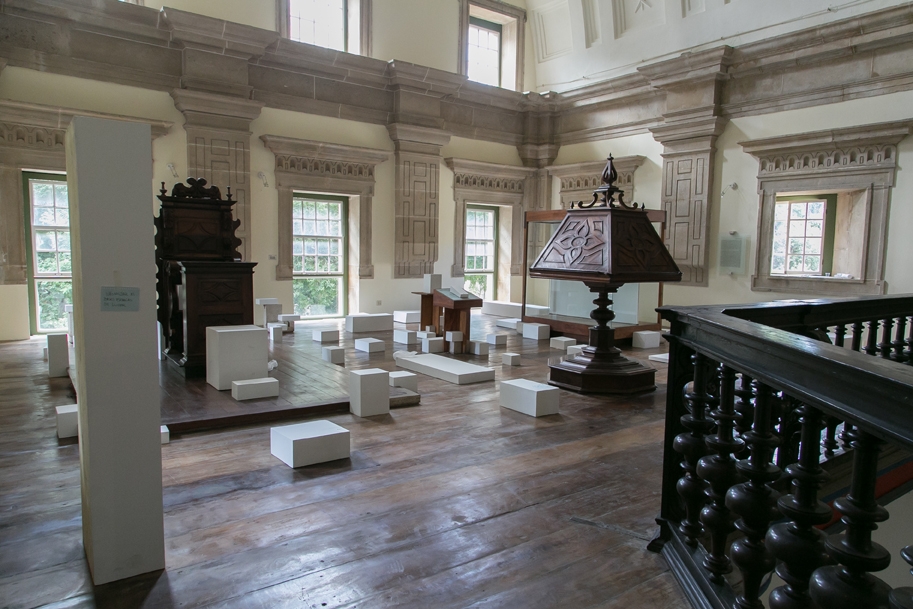The Bahia Bienal presents its third edition running from 29 May to 7 September in several venues in Salvador (the largest city in Bahia), and in nine other cities in the area. This closes a gap of 46 years since its last edition in 1968, which was closed down by the military regime on the grounds of offensive artworks. Marcelo Rezende, chief curator of this third edition, talks to ArtReview.
ArtReview: The second Bahia Biennale was closed down after two days by the military regime in 1968? What were the works that offended them?
Marcelo Rezende: Nineteen works were considered subversive or morally offensive, especially some by Lênio Braga and Antonio Manuel. Even a constructivist sculpture was deemed scurrilous. In the case of Braga it was a painting, an interpretation of the Rape of the Sabine Women called ‘A Curra’ – a raw and vulgar word in Portuguese for ‘rape’, and it pictured the rapists dressed in uniforms of the Brazilian army. The organisers of the first two Bienal da Bahia editions (Juarez Paraíso and Riolan Coutinho) were arrested together with many others, and some of them were tortured. Today all the records of this period can be found only in personal memories and oral testimonies. Very little has been published or discussed.
AR: Why has there not been a biennale since? How has the ghost of that biennale-that-never-fully-was haunted Bahia’s art scene since?
MR: In 1968, at the time of 2nd Bienal, Bahia was living its ‘Renaissance’, as the Bahianos themselves define that moment. Throughout the 1950s and 1960s radical artists and thinkers such as composers Hans Koellreuter and Walter Smetak, the ballerina Yanka Rudska and, last but not least, the architect Lina Bo, were teaching in Bahia’s universities. The scene was fantastic. The ‘Tropicália’ of Caetano Veloso, Gilberto Gil and Rogério Duarte is only one among the many musical phenomena that came out of this highly energised ambience. The Bienal’s ghost is the ghost of the last grasp of a social and artistic possibility, before falling into 40 years of an extremely authoritarian regime. This fact provoked a brutal suppression of a collective desire, and Bahia’s isolation.
AR: The curatorial statement says that you wish a ‘continuity’ between the biennales in 1966 and 1968, and this one in 2014. How will you achieve this?
MR: The first task we posed to ourselves is to try to understand what were the original intentions of the two previous editions, following Walter Benjamin’s steps: to search in the past for possibilities that never managed to concretise or to sustain themselves in face of a particular cultural, social and economic context in history; to identify these moments in order to look for hints to understand, and perhaps even try to answer our present issues. The Bahia biennials wanted to create a counter-discourse to the Bienal de São Paulo, the second oldest biennial still active. In this counter-discourse, they asked themselves: how can we diminish the distance between artistic action and the communities, the people? There was not (and there is not still) a developed artistic system in Bahia. There is no gallery circuit or a set of collectors, and the museums have an institutional presence in the state, at best. The demands were and still are distinct from the art market. In this sense, the Bahia biennials advanced many procedures practiced only two decades later, with the Havana Biennale – although Cuba was, quite possibly, unaware of this fact.
AR: Do you think Salvador’s turbulent history is still relevant to the country’s artists today? How so?
MR: Thinking just about Salvador makes the reach of the experience too limited. Bahia is also the ‘sertão’ (the outback), with its own codes, traditions and movements that mix the indigenous culture with the Iberic (Hispano-Portuguese) medieval imaginary. Brazil begins in Bahia: the relationship with the exuberant nature, the race mix, the violence, the Portuguese language in our own version. Here also begins the trauma, the shyness and shame, the self-abasement, a certain happy perversity that moulds the Brazilian culture as much as the tortuous and baroque thinking. In any case, for the Brazilian (and not just Brazilian) artists interested about Brazil, there is no detour away from Bahia.
AR: The biennale’s thirteen artists, and one critic, have been asked to stay in Bahia for two months while they produce the work. Why did you ask them to this? What do you hope the outcome has been?
MR: The most honest answer is that they were invited to help us to think and understand Bahia’s condition, teaming up in a group that could compose with us reflections and commentary about the reach and the limits of the Bienal itself; to think together with the curators how to do, how to materialise something from Bahia’s perspective, and refusing to make use of pre-conceived ideas about art and its critical reflection.
Actually much of this process extends itself along the whole 3rd Bienal. Artists have helped us to build staircases, to assemble exhibitions and to participate in our communications strategies, exactly in the same way as a curatorship provoke interference in the artistic production. And what do we expect as a result? The result is the whole Bienal, each proposed program or action. The fingerprints of the residency group are all over the place.
22 May 2014
